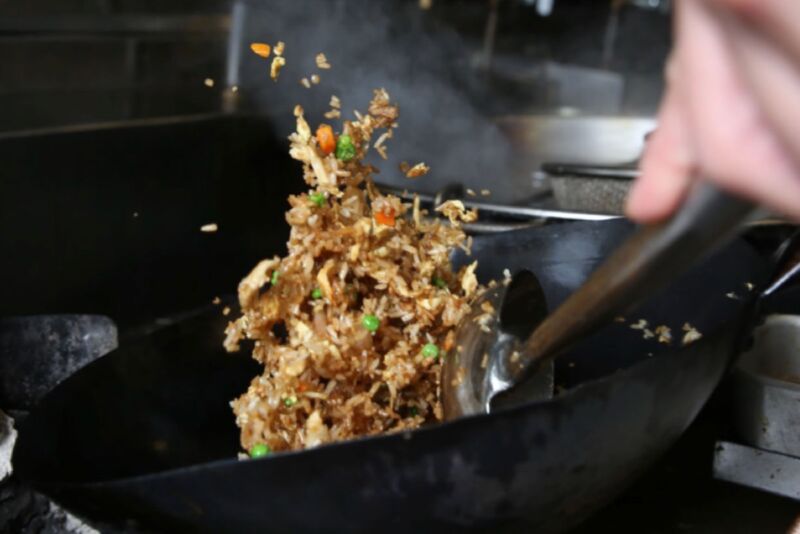Georgia Tech physicists unlock the secret to perfect wok-tossed fried rice

Enlarge / Wok tossing has long been suspected of causing the high shoulder injury rate among Chinese chefs. (credit: Hunting Ko and David Hu/Georgia Tech)
Fried rice is a classic dish in pretty much every Chinese restaurant, and the strenuous process of tossing the rice in a wok over high heat is key to producing the perfect final product. There's always chemistry involved in cooking, but there's also a fair amount of physics. Scientists at the Georgia Institute of Technology have devised a model for the kinematics of wok-tossing to explain how it produces fried rice that is nicely browned, but not burnt. They described their work in a recent paper published in the Journal of the Royal Society: Interface.
This work hails from David Hu's lab at Georgia Tech, known for investigating such diverse phenomena as the collective behavior of fire ants, water striders, snakes, various climbing insects, mosquitos, the unique properties of cat tongues, and animal bodily functions like urination and defecation—including a 2019 Ig Nobel Prize winning study on why wombats produce cubed poo. Hu and his graduate student, Hungtang Ko—also a co-author on a 2019 paper on the physics of how fire ants band together to build rafts—discovered they shared a common interest in the physics of cooking, particularly Chinese stir-fry.
Hu and Ko chose to focus their investigation on fried rice (or "scattered golden rice"), a classic dish dating back some 1500 years. According to the authors, tossing the ingredients in the wok while stir-frying ensures that the dish is browned, but not burned. Something about this cooking process creates the so-called "Maillard reaction": the chemical interaction of amino acids and carbohydrates subjected to high heat that is responsible for the browning of meats, for instance.
Read 9 remaining paragraphs | Comments
https://ift.tt/32kNYXL
from Ars Technica https://ift.tt/2PhA7ME

No comments